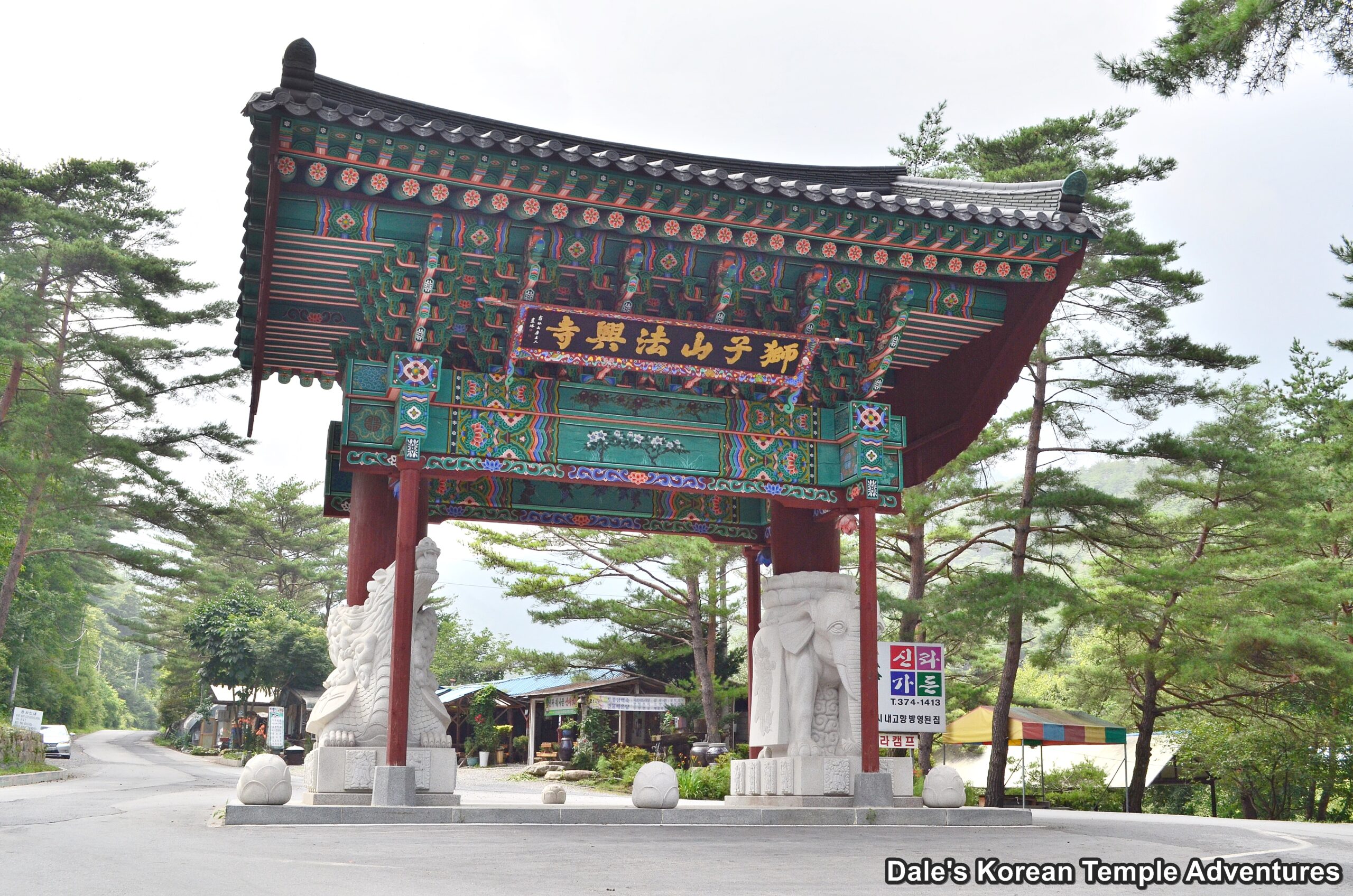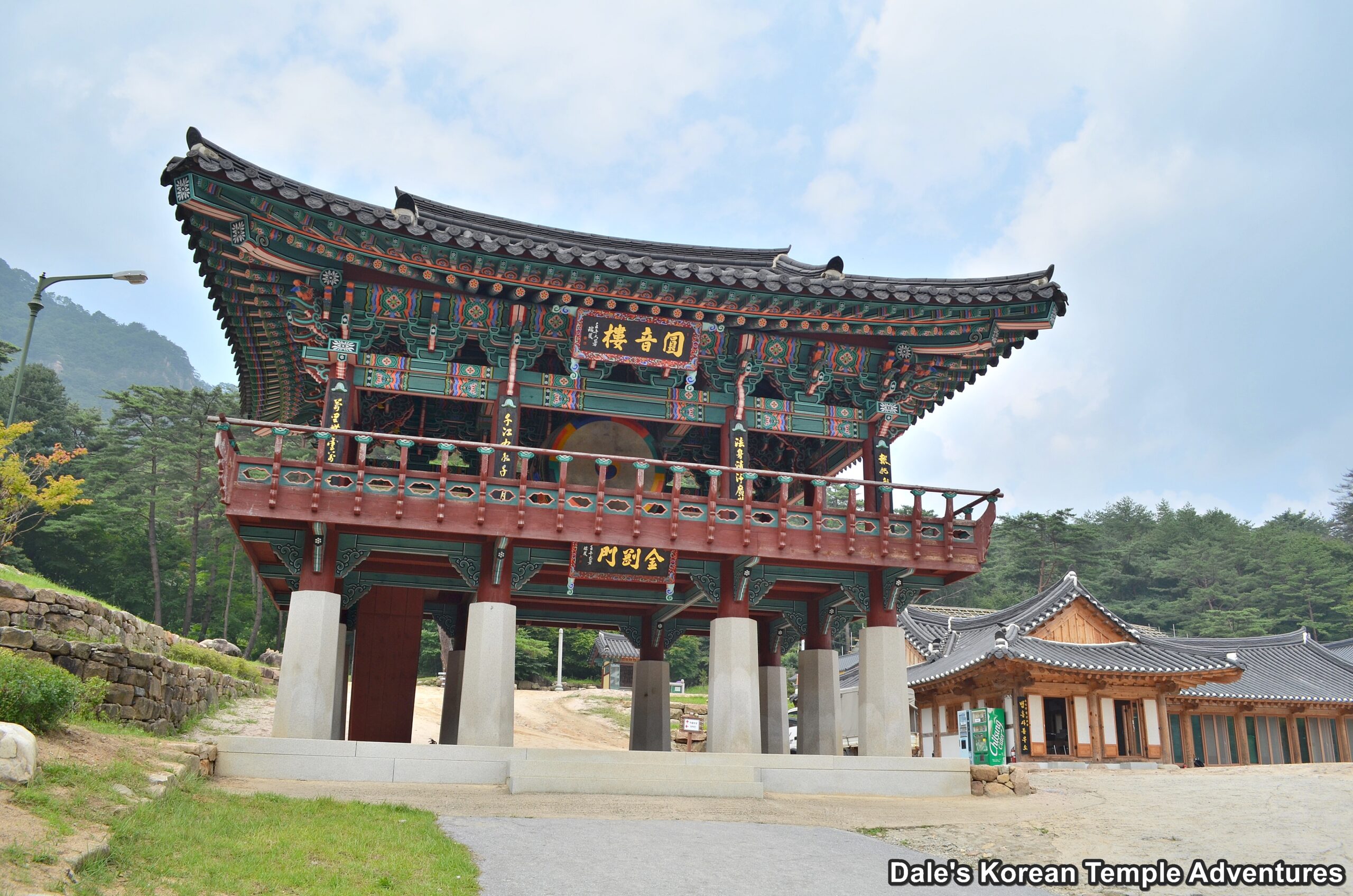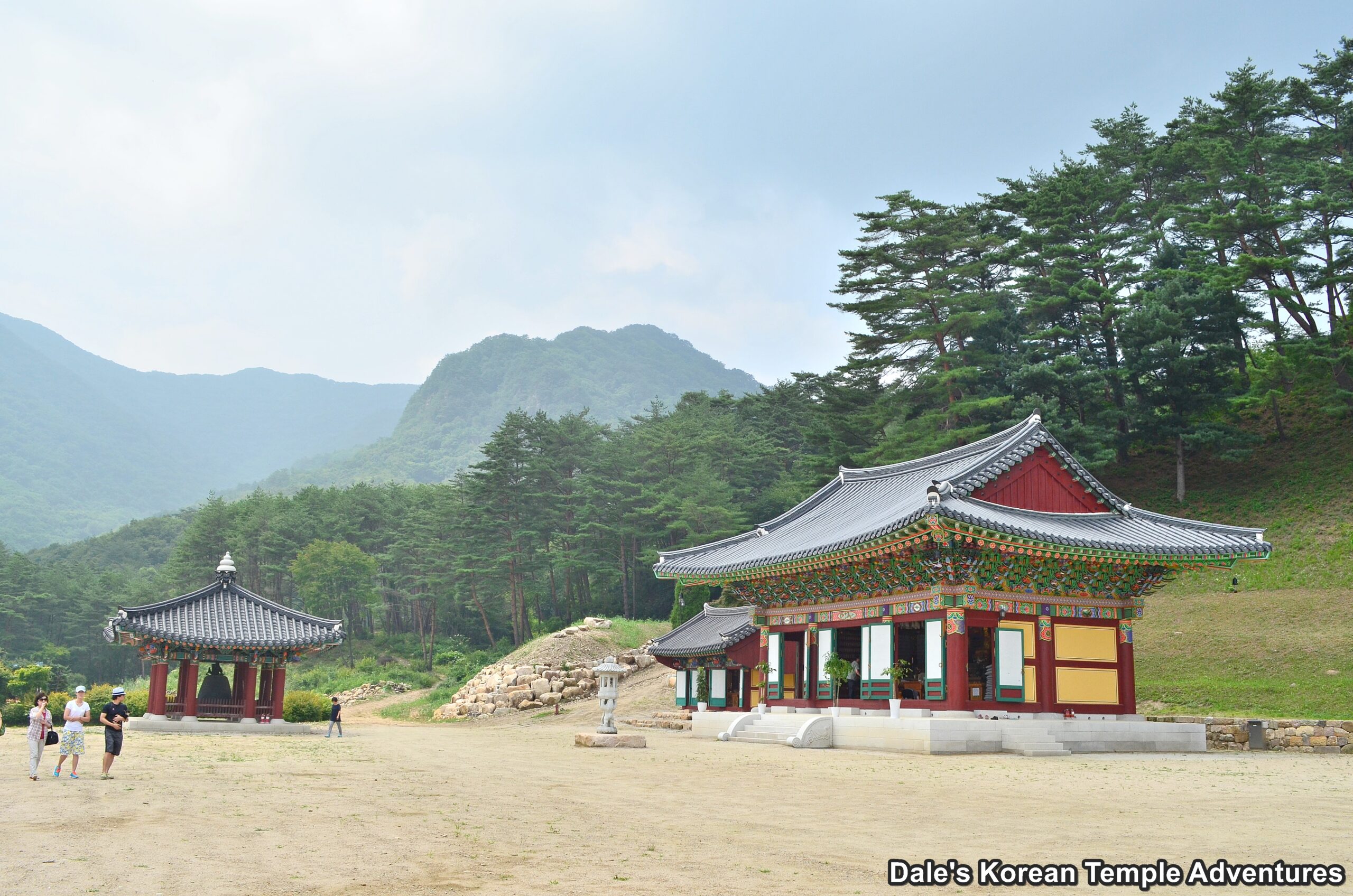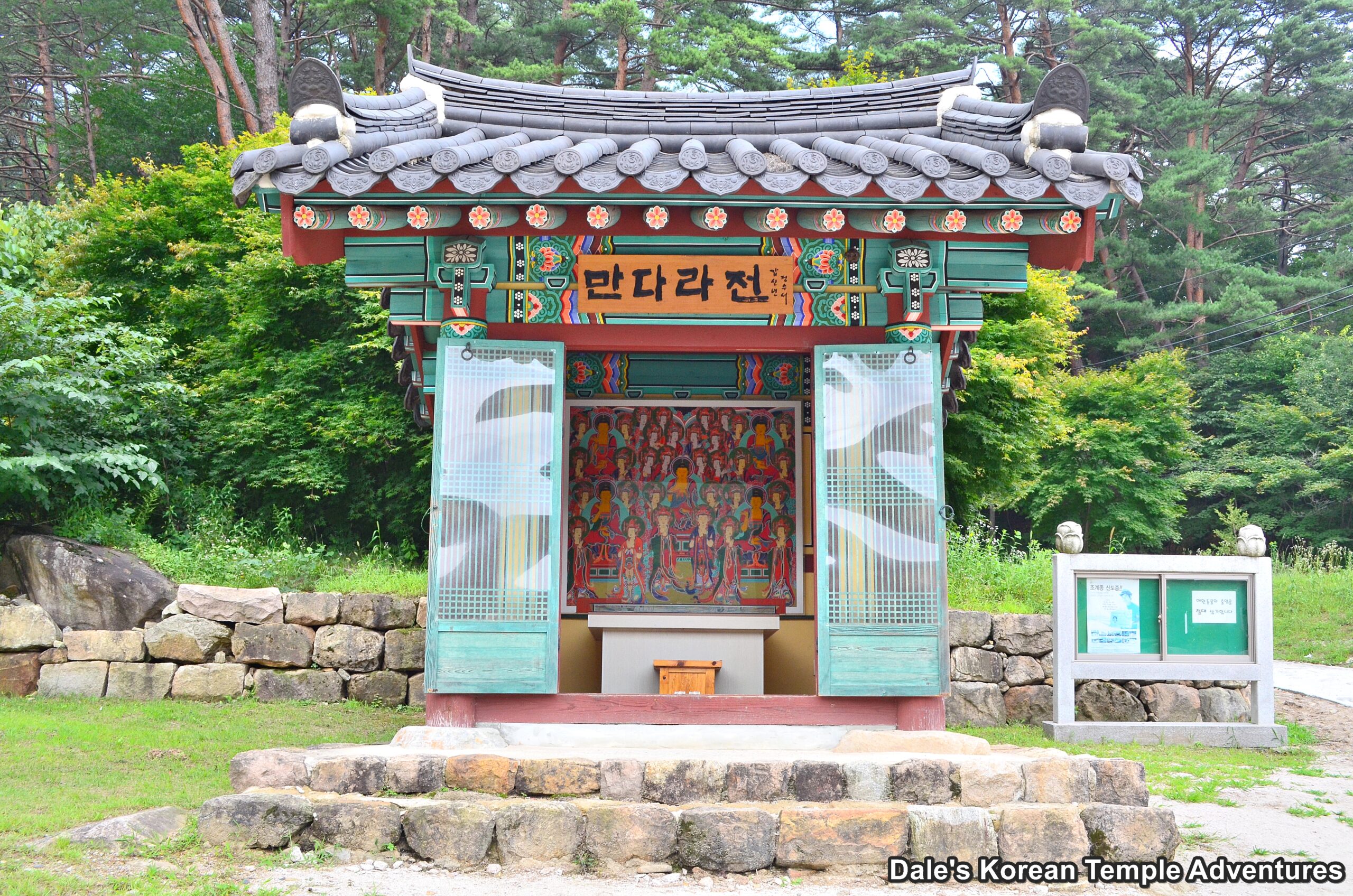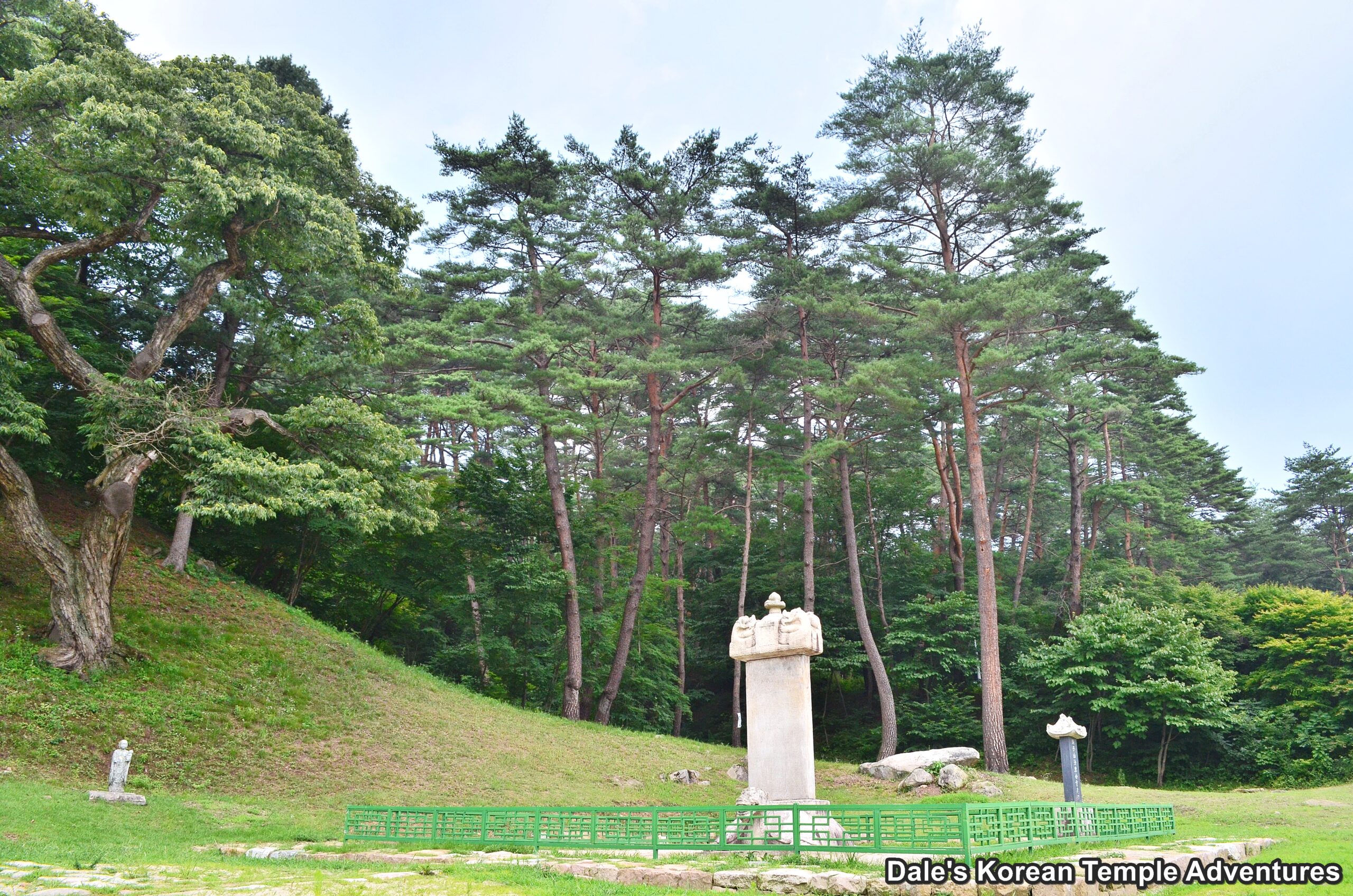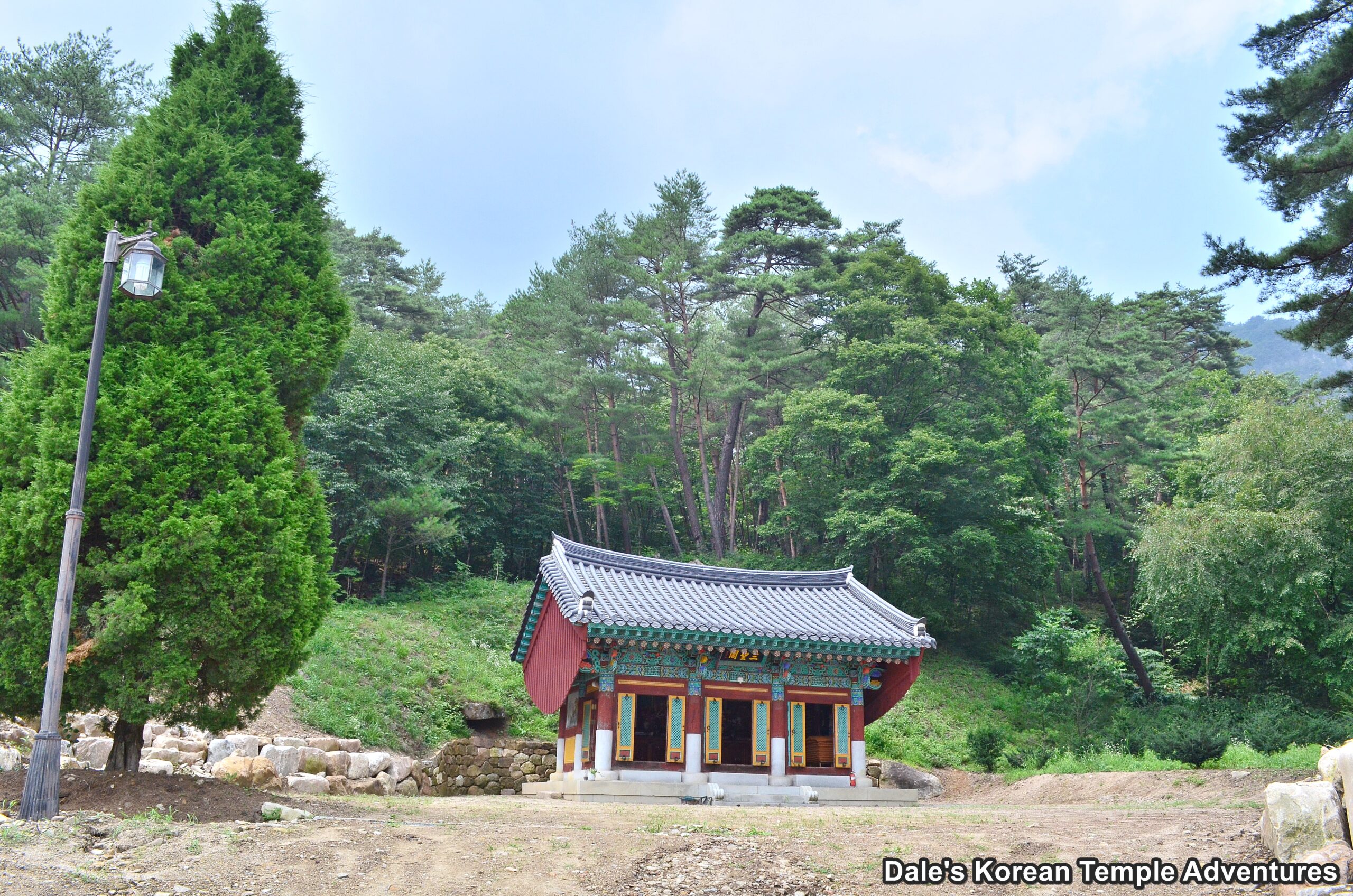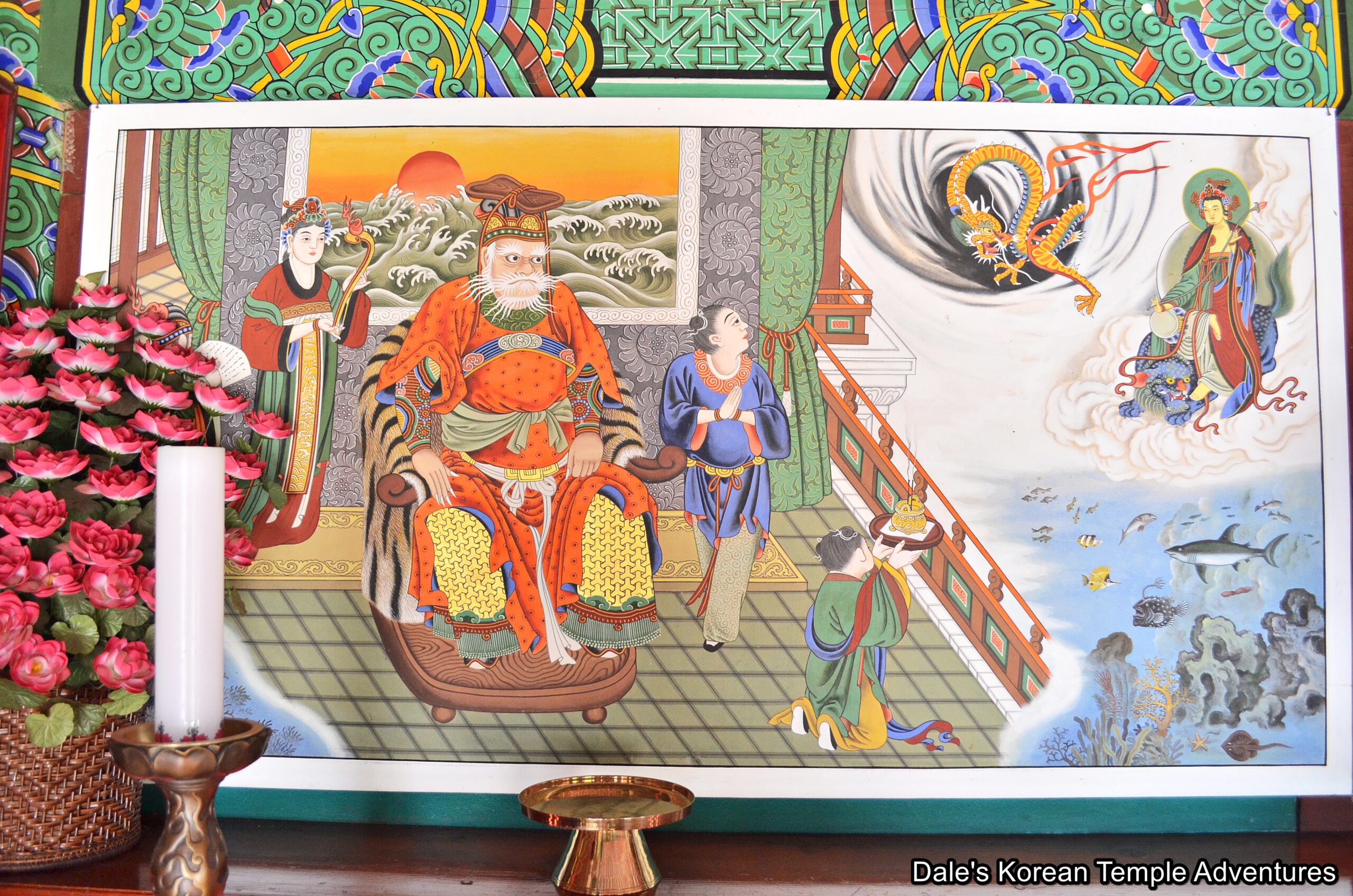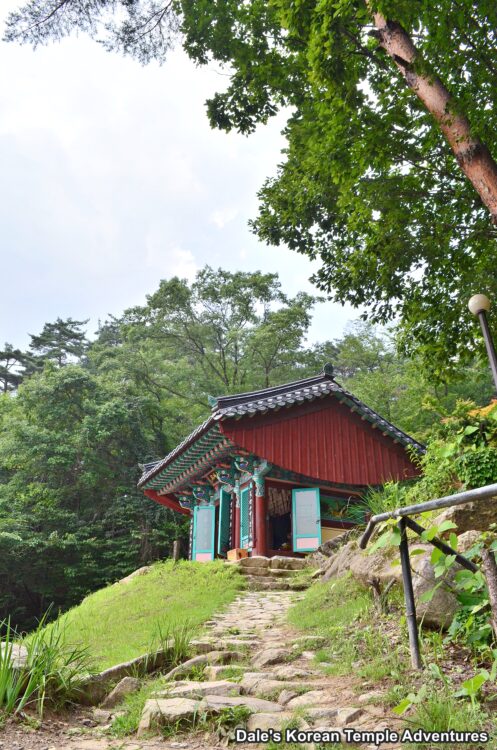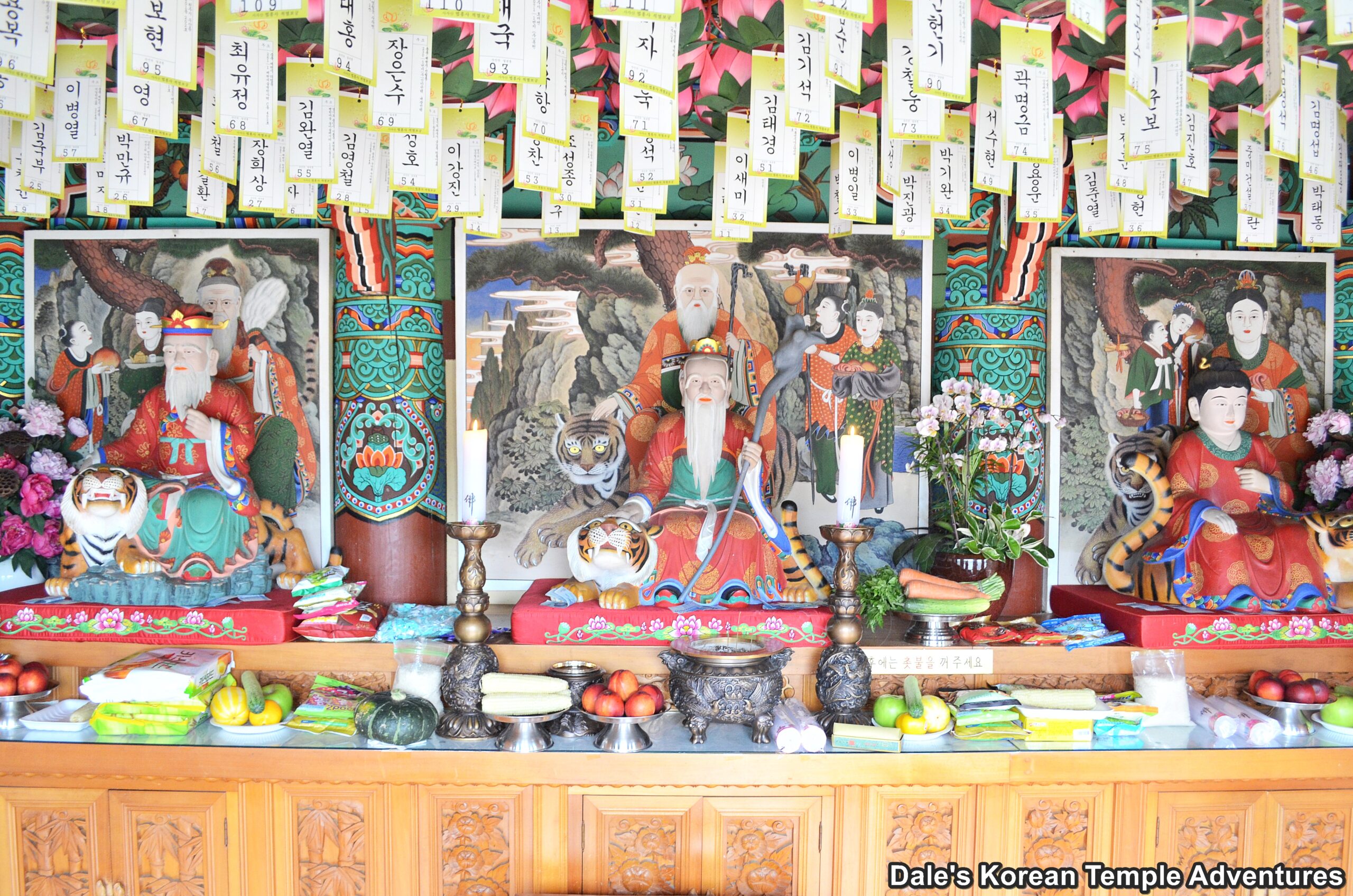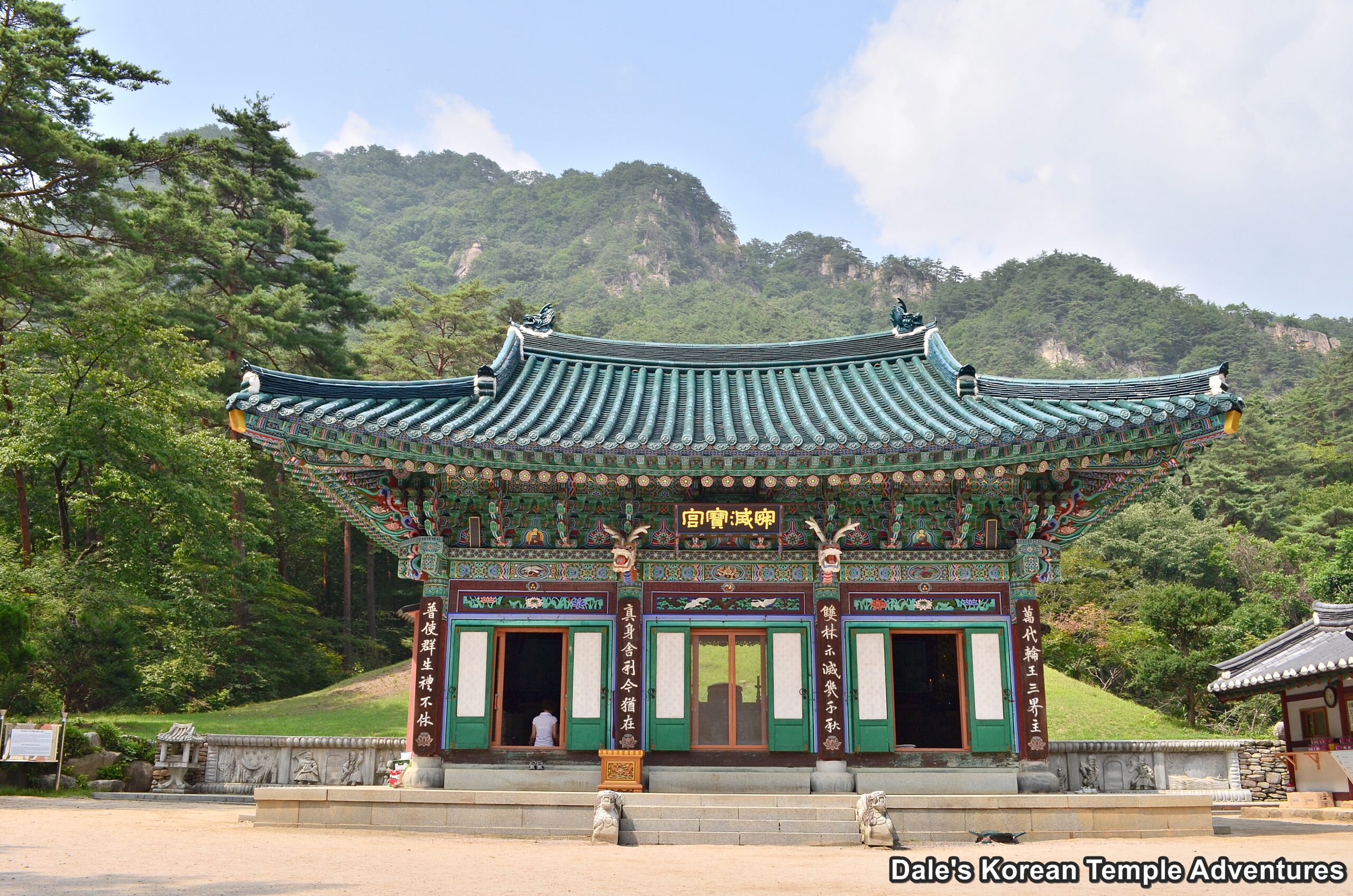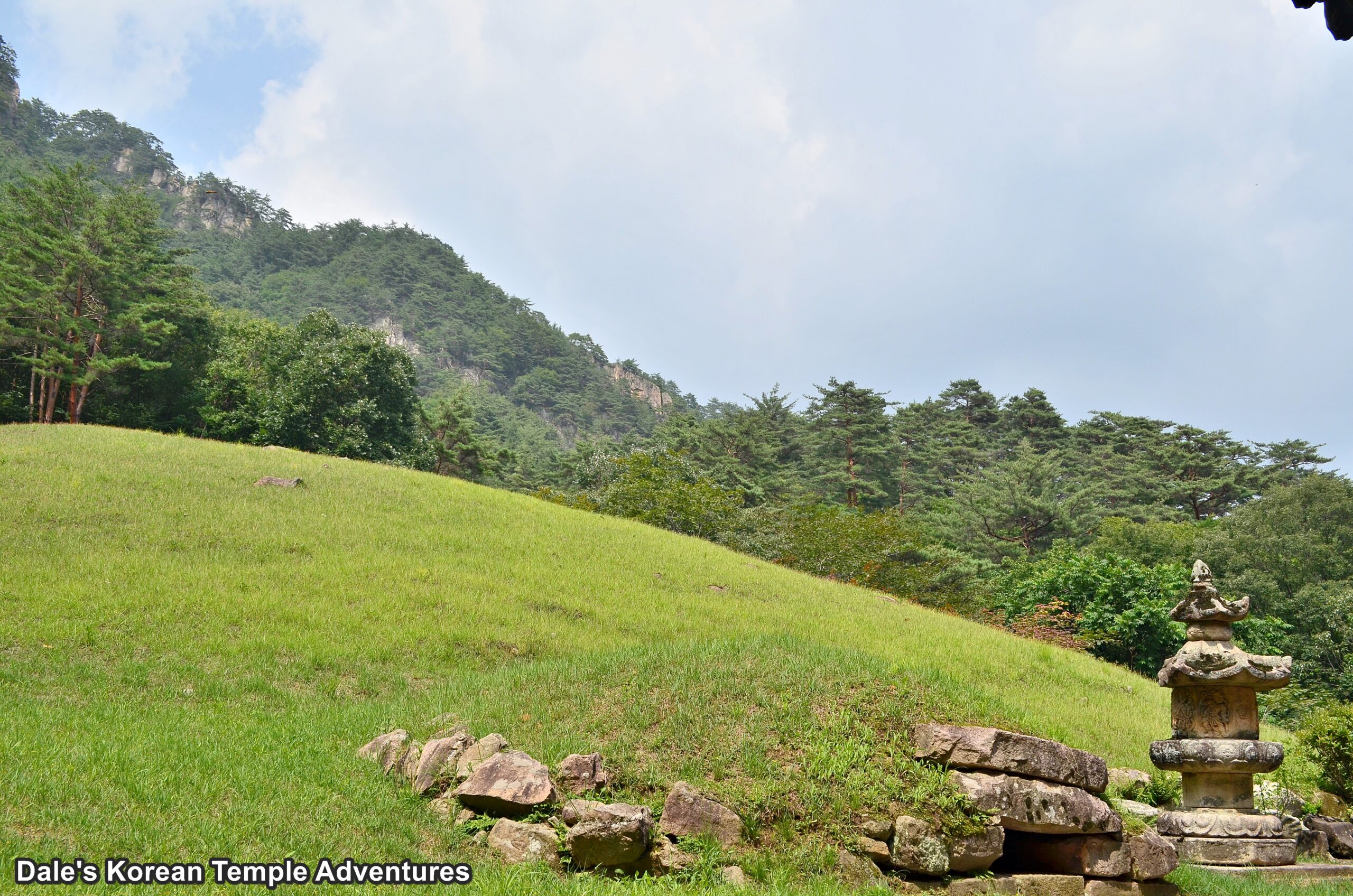Beopheungsa Temple – 법흥사 (Yeongwol, Gangwon-do)
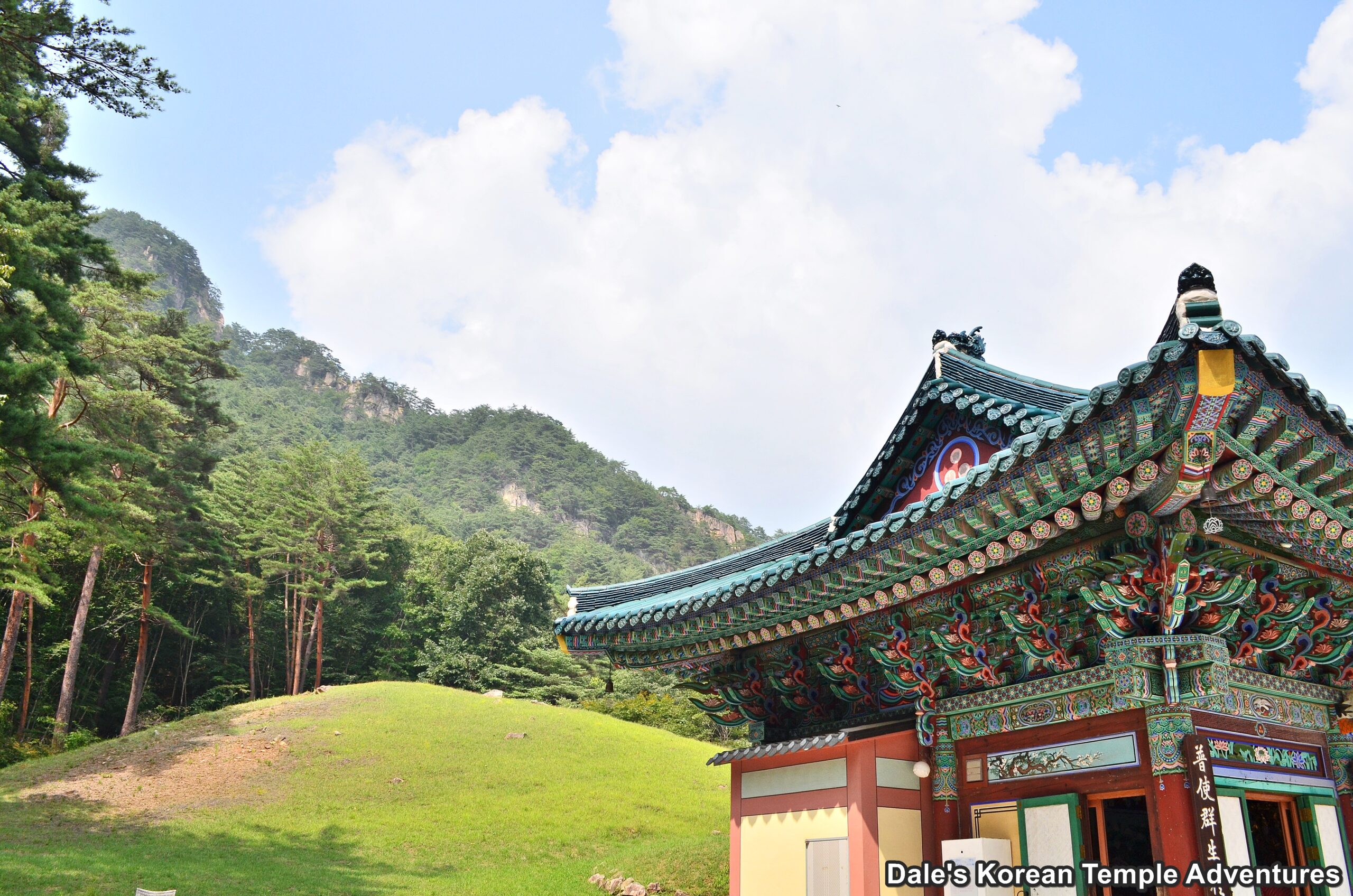
Temple History
Beopheungsa Temple, which means “Dharma Promotion Temple,” in English, is located in Yeongwol, Gangwon-do. Specifically, Beopheungsa Temple is situated on the southern slopes of Mt. Sajasan (1,180.4 m), or “Lion Mountain,” in English, just east of Chiaksan National Park. Beopheungsa Temple was first established under the name Heungnyeongsa Temple, which means “Prosperous Peaceful Temple,” in English, by the famed monk Jajang-yulsa (590-658 A.D.) in 643 A.D. The temple was first established by Jajang-yulsa to house the sari (crystallized remains) of Seokgamoni-bul (The Historical Buddha). Alongside six other historic sites in Korea, five of which are still in existence, they are known as Jeokmyeol-bogung, or “Silent Nirvana Treasure Palace,” in English. After having returned to the Korean peninsula from his travels to China in 643 A.D., Jajang-yulsa helped spread Buddhism throughout the Silla Kingdom. The way in which Jajang-yulsa attempted to further this was by establishing Jeokmyeol-bogung temples.
In addition to Beopheungsa Temple, formerly Heungnyeongsa Temple, being a Jeokmyeol-bogung temple, it was also one of the Gusan Seonmun, or “Nine Mountain Meditation Gates,” in English, which were the nine original Korean Seon (Zen) sects. Specifically, the Mt. Sajasan sect of Korean Seon Buddhism was established by the master monk Doyun (797-868 A.D.). Master Doyun studied under the monk Nanquan Puyuan (748-835 A.D.).
The temple was destroyed by fire in 891 A.D., but it was later rebuilt in 944 A.D. For centuries, the temple flourished, until it fell into disrepair during the Joseon Dynasty (1392-1910). It wasn’t until 1902, when the temple was reconstructed, that the temple was renamed Beopheungsa Temple. The temple was destroyed, once again, in 1912. It was later rebuilt in 1930. Sadly, older parts of the temple like stone pagodas, were lost in a landslide in 1931. Again, the temple was destroyed; this time, during the Korean War (1950-1953). Beopheungsa Temple was rebuilt, once more, during the 1970’s. And this reconstruction continues to the present day.
Beopheungsa Temple is home to one Korean Treasure. Additionally, Beopheungsa Temple participates in the popular Temple Stay program in Korea.
Temple Layout
You first approach the temple grounds at Beopheungsa Temple up a road that’s lined with beautiful, mature trees. Halfway up the road, you’ll come to the temple’s Iljumun Gate. The beautiful Iljumun, or “One Pillar Gate,” in English, is adorned with dragon and elephant stone bases around the twin pillars that support the entry gate.
Having made your way up the rest of the road that leads to the temple grounds, you’ll be greeted by the two-story Woneum-ru Pavilion. The first floor of the pavilion acts as an entry gate to the rest of the temple, while the second story houses the large temple drum. Having passed through the entry pavilion, you’ll notice a collection of buildings to your right. These are facilities for the monks, as well as the temple’s gift shop and visitors centre. To the left of the Woneum-ru Pavilion is the expansive temple courtyard. While the courtyard is largely unoccupied in its present form, it must have been something wonderful to see during Beopheungsa Temple’s heyday.
The Geukrak-jeon Hall acts as the temple’s main hall. The exterior walls to the Geukrak-jeon Hall are only adorned with the traditional dancheong colours. With that being said, there’s a beautiful, but diminutive, stone lantern reminiscent of the historic one found at Beopjusa Temple, which can be found in front of the Geukrak-jeon Hall. Sitting inside the Geukrak-jeon Hall is a triad centred by Amita-bul (The Buddha of the Western Paradise). This statue is joined on either side by Jijang-bosal (The Bodhisattva of the Afterlife) and Gwanseeum-bosal (The Bodhisattva of Compassion). All three are beautifully adorned with regal-looking robes.
To the far right of the Geukrak-jeon Hall is the Mandala-jeon Hall. This hall, as the name kind of gives away, houses a painting of the Buddha inside it, as well as a sand mandala. This type of a shrine hall is a first for me. I haven’t seen anything like it anywhere else in Korea.
To the left of the Geukrak-jeon Hall is the Josa-jeon Hall. Inside this shrine hall is housed a beautiful new mural dedicated to the founding monk of Beopheungsa Temple: Jajang-yulsa. In front of the Josa-jeon Hall is a Jong-gak Pavilion that houses the stout temple bell. It’s between the Josa-jeon Hall and the Jong-gak Pavilion that you’ll find the Samseong-gak Hall that sits all alone on the elevated knoll. This shaman shrine hall, which appears to be newly constructed, houses a triad of paintings inside it. The triad consists of a central mural dedicated to Chilseong (The Seven Stars). To the right hangs a mural dedicated to Dokseong (The Lonely Saint). And to the left hangs a mural dedicated to Yongwang (The Dragon King). In this mural, Yongwang is joined by a heavenly image of Munsu-bosal (The Bodhisattva of Wisdom) riding a blue haetae.
And to the right rear of the Geukrak-jeon Hall, you’ll find a stele, or a “biseok,” in Korean. This stele is dedicated to Jinghyo-daesa (826-900 A.D.)., and it was erected in 944 A.D. This stele is Korean Treasure #612. Originally, the stele was erected to wish for the prosperity of Heungnyeongsa Temple and to honour the life and work of Jinghyo-daesa. The stele rests on a tortoise-shaped base. The stone claws are quite sharp, and the head of the tortoise resembles a dragon. The capstone crowns the stele. There are four dragons on the capstone that look inwards towards the centre. And the body of the stele recounts the life of Jinghyo-daesa. Overall, the stele is well preserved considering its age.
However, the main highlight to Beopheungsa Temple lies up the pathway to the right of the Mandala-jeon Hall. The pathway that ultimately leads up to the Jeokmyeol-bogung is lined with beautiful red pines. However, before finally arriving at the Jeokmyeol-bogung, you’ll first come to the Yaksa-jeon Hall. And just behind the hall that houses Yaksayeorae-bul (The Medicine Buddha, and the Buddha of the Eastern Paradise) is one of the most unique Sanshin-gak Halls in Korea. Immediately when you step inside this shaman shrine hall, you’ll be greeted by three individual paintings of Sanshin (The Mountain Spirit). In the centre hangs an elderly painting of Sanshin. To the right of this central image is a female Sanshin. And to the left is another Sanshin; this time, however, this Mountain Spirit has a headdress.
The final structure at Beopheungsa Temple is also the most famous. The Jeokmyeol-bogung Hall has a window reminiscent of the one found at Tongdosa Temple’s Daeung-jeon Hall. This window looks out onto a mound of earth that contains Seokgamoni-bul’s (The Historical Buddha) remains. This mound is where Jajang-yulsa buried the sari (crystallized remains) of the Buddha. In addition to this burial mound is a cave called Jajang-yulsa Togul. This cave is situated at the base of the embankment. Purportedly, this is the cave that Jajang-yulsa prayed from. The view from the Jeokmyeol-bogung is spectacular, and it gives you a good idea as to why Jajang-yulsa picked the location he did for the Jeokmyeol-bogung.
How To Get There
From the Wonju Intercity Bus Terminal, you’ll need to take a bus to Jucheon. The bus ride from Wonju to Jucheon is fifty minutes. And then from Jucheon, you’ll need to take a local bus bound for Beopheungsa Temple. This bus leaves five times a day, and the ride lasts about thirty minutes in duration.
Overall Rating: 8/10
Any temple that has a Jeokmyeol-bogung should rate rather high. However, because of centuries of destruction and neglect, Beopheungsa Temple is only now being restored to its former glory. There are a handful of beautiful shrine halls like the highly unique Sanshin-gak Hall and the Geukrak-jeon Hall. In addition, you can also enjoy the Mandala-jeon Hall and the stele dedicated to Jinghyo-daesa. And all of these Buddhist monuments and shrine halls are beautifully framed by Mt. Sajasan and the twisted red pine trees that populate it.
